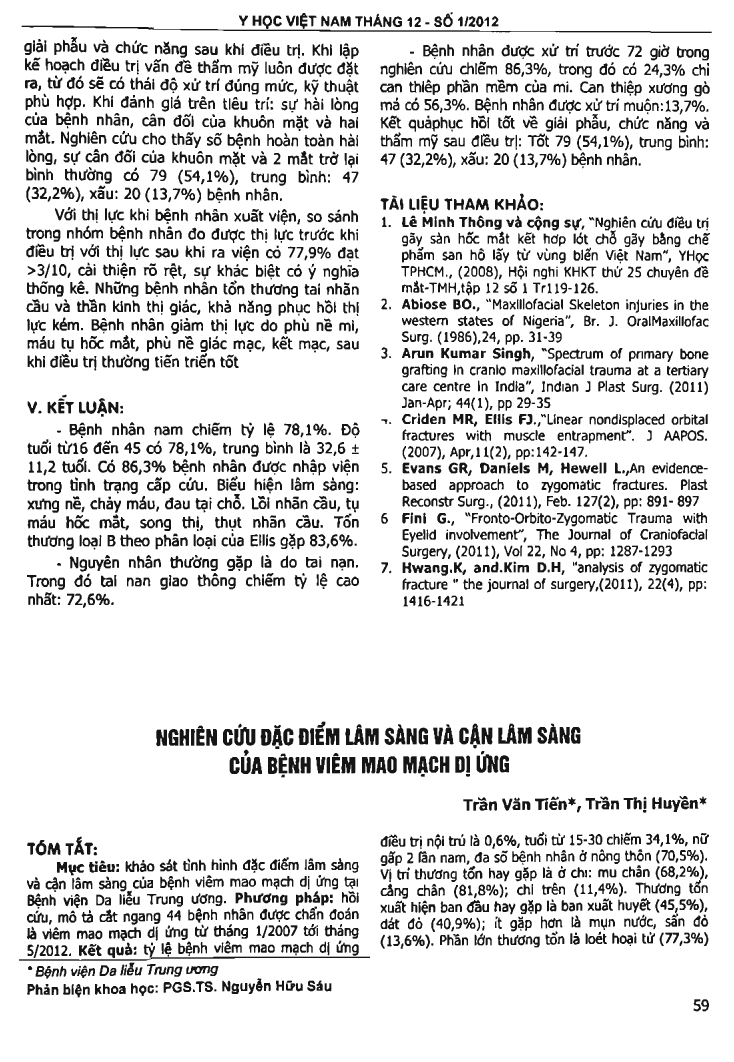
Objective: to investigate situation, clinical characteristics and laboratory tests of HV at the National Hospital of Dermato-Venereology (NHDV). Method: this is a retrospective, cross-sectional descriptive study on 44 medical records with diagnoses as HV at NHDV from Jan, 2007 to May, 2012. Results: among in patients treated at NHDV, HV cases were 0.6 percent, patients aged 15-30 were 34.1 percent; female/male ratio was 2:1; 70.5 percent patients were from rural areas. Common sites had lesions of HV: the back of feet (68.2 percent), lower legs (81.1 percent), upper extremities (11.4 percent). Manifestations initially appearing included purpara (45.5 percent), erythematous macule (40.9 percent), vesicle and erythematous papule were less common with 13.6 percent. Many patients had unceration (77.3 percent)and purpara (63.3 percent), in addition, uncommon lesions were macule of hyperpigmentation (27.3 percent) and pustule (22.7 percent). Patients with hyperleukocytoemia were 43.2 percent, and with increasing neutrophil were 75 percent, no one with increasing eosinophil in peripheral blood. Some patients were tested with p-ANCA and c-ANCA, all results were negative. Histological lesions included inflammation (appearing in all patients), necrotic of the blood vessel walls (68.8 percent), and extravasated erythrocytes (56.3 percent). Conclusion: HV is a uncommon disease with variously clinical characteristics and it isn't easy to diagnose exactly. Tests should be fully done to diagnose, predict and treat HV.
- Đăng nhập để gửi ý kiến
